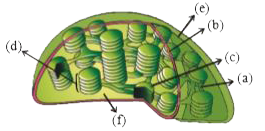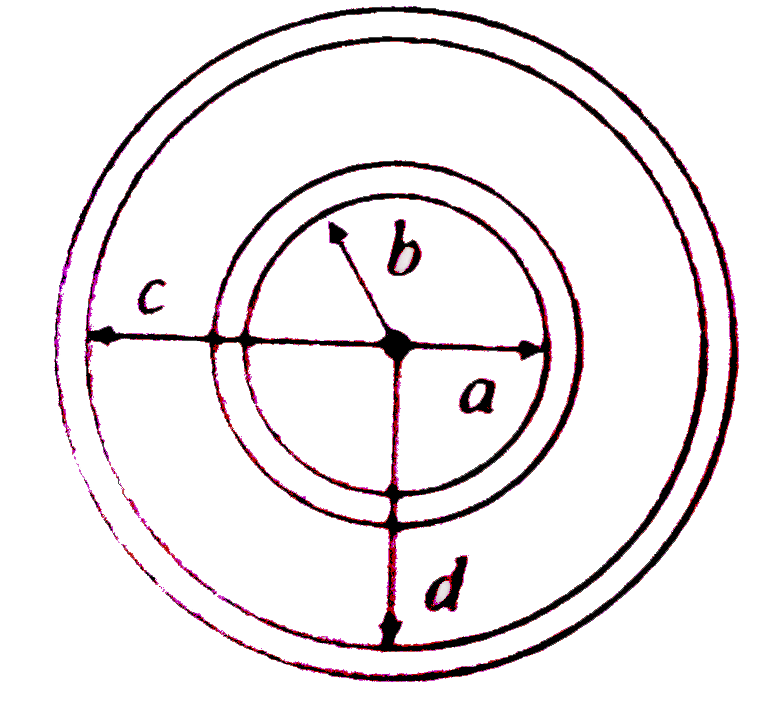Trace out the different parts of the bone from outside to inside.
A)Haversian, canal B) Concentric lamellae
C) Interstital lamellae D) Endosteum
E) Inner circumferential lamellae
F) Endosteum
G)Outer circumferential lamellae
H)Bone marrow
I) Peristoeum
A-E-B-C-H-I-F-D
I-G-C-B-A-E-F-H
A-B-C-D-E-F-G-H-I
B-C-D-E-G-H-F-A-I
The correct Answer is:B
Step by step video & image solution for Trace out the different parts of the bone from outside to inside. A)Haversian, canal B) Concentric lamellae C) Interstital lamellae D) Endosteum E) Inner circumferential lamellae F) Endosteum G)Outer circumferential lamellae H)Bone marrow I) Peristoeum by Biology experts to help you in doubts & scoring excellent marks in Class 11 exams.
Updated on:21/07/2023Topper's Solved these Questions
- STRUCTURAL ORGANISATION IN ANIMALSBOOK - AAKASH SERIESCHAPTER - STRUCTURAL ORGANISATION IN ANIMALSEXERCISE - EXERCISE-I (MUSCULAR TISSUE)
57 Videos
- STRUCTURAL ORGANISATION IN ANIMALSBOOK - AAKASH SERIESCHAPTER - STRUCTURAL ORGANISATION IN ANIMALSEXERCISE - EXERCISE-I (ORGAN AND ORGAN SYSTEM)
4 Videos
- STRUCTURAL ORGANISATION IN ANIMALSBOOK - AAKASH SERIESCHAPTER - STRUCTURAL ORGANISATION IN ANIMALSEXERCISE - EXERCISE-III (PREVIOUS AIPMT/NEET QUESTIONS)
24 Videos
- STRATEGIES FOR ENHENCEMENT IN FOOD PRODUCTIONBOOK - AAKASH SERIESCHAPTER - STRATEGIES FOR ENHENCEMENT IN FOOD PRODUCTIONEXERCISE - EXERCISE-III
68 Videos
- THE LIVING WORLD BOOK - AAKASH SERIESCHAPTER - THE LIVING WORLD EXERCISE - EXERCISE-III (Previous AIPMT/NEET Questions)
12 Videos
Similar Questions
Read the following statements carefully -
(A) The lipid component of the plasma membrane mainly consists of phosphoglycerides.
(B) Polar molecules can pass through the lipid bilayer of the plasma membrane, therefore they do not require carrier proteins to facilitate their transport.
(C ) The secondary wall is capable of growth and it is formed on the outer side of the primary wall.
(D) Quasifluid nature of lipid enables the lateral movement of proteins within the overall lipid bilayer of the plasma membrane.
(E) Middle lamella glues the different neighbouring cells together.
How many statements are incorrect?
View Solution
Identify a, b, c, d, e and f from the given i, ii, iii,iv, v and vi (i) Stroma
(ii) Granum
(iii)Thylakoid
(iv)Intergranal Thylakoid
(v) Inner membrane
(vi) Outer membrane
View SolutionRead the following statements and find out the incorrect statements.
a. Anatomically, the ear can be divided into three major sections called the outer ear, the middle ear and the inner ear.
b. The outer ear consists of the pinna and external auditory meatus (canal).
c. The tympanic membrane (ear drum ) is composed of connective tissue covered with mucus membrane outside and with skin inside.
d. The ear ossicles reduces the efficiency of transmission of sound waves to the inner ear.
e. The pinna collects the vibrations in the air which produce sound.
View SolutionMark the wrong statements from the options given below(a.) Small , circular DNA also present in mitochondria and chloroplast.
(b.) The extension of plasma membranes mesosomes into, the cell can be present in the form of tubules , lamellae and vesicles.
(c.) The quasi fluid natural of lipid enables flip flop movement of proteins at a specific place.
(d.) Components of the endomembrane system associated with secretion , packaging of material and capable of digestion of several macro organic compounds.
(e.) Palade particles forming a peptide bond between amino acids is a membrane - bounded organelle.
View SolutionA small conducting spherical shell with inner radius a and outer radius b is concentric with a larger conducting spherical shell with inner radius c and outer radius d. The inner shell has total charge +2q and the outer shell has charge +4q.
(i) What is the total charge on the (a) inner surface of the small shell, (b) outer surface of the small shell (c) inner surface of the large shell, (d) outer surface of the large shell ?
(ii) Calculate the electric field in terms of q and the the distance r from the common centre of two shells for (a) r<a, (b) a<r<b, (c) b<r<c, (d) c<r<d, (e) r>d

View SolutionList-I List-II
a) Fresnel's diffraction e) Bright band
b) Fraunhofer's diffraction f) Source and screen are at finite distance
c) In interference phase difference is even multiple of π g) Dark band
d) In interference phase difference is odd multiple of π h) Source and screen are at infinite distance
View SolutionIn given circuit determine
(a) Equivalent resistance (Including internal resistance).
(b) Current I,i1,i2' and i3
( c) Potential difference across battery and each resistance
(d) The rate at which the chemical energy of the cell is consumed
(e ) The rate at which heat is generated insisde the battry
(f) Electric power output
(g) Which resistance consumes miximum power ?
(h) Power dissipated across 4Ω resistance.

View SolutionWhich of the following statements about cell wall are correct ?
(a) Mainly composed of phospholipid
(b) Determine shape of cell
(c) Protects cell from mechanical damage
(d) Protects cell from infection
(e) Present in all eukaryotic cells
(f) Provide barrier to undesirable macromolecules
(g) Quasifluid in nature
(h) Non living rigid structure
(i) May be traversed by plasmodesmata
View SolutionA resistor circuit is constructed such that 12 resistor are arranged to form a cube as shown in fig. Each resistor has a resistance of 2Ω. The potential difference of 30V is applied across two of the opposing points as shown

If we replace resistor between A and B and resistors between G and H by wires of zero resistance, then the points having the same potential are
i. D,E,C,F ,ii. A,B ,iii. G,H
View SolutionWhich separation techniques will you apply for the separation of the following ?
(a) Sodium chloride from its solution in water.
(b) Ammonium chloride from a mixture containing sodium chloride and ammonium chloride.
(c ) Small pieces of metal in the engine oil of a car.
(d) Different pigments from an extract of flower petals.
(e ) Butter from curd.
(f) Oil from tea.
(g) Tea leaves from tea.
(h) Iron pins from sand.
(i) Wheat grains from husk.
(j) Fine mud particles suspended in water.
View Solution
